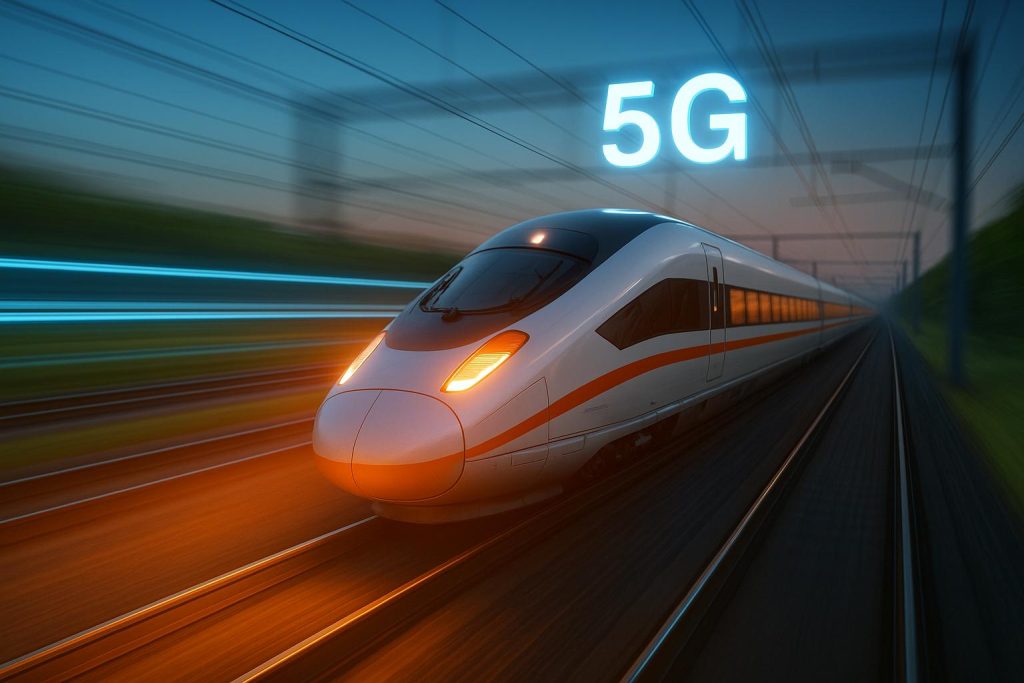Listen to the article
Deutsche Bahn and Nokia have launched the world’s first commercial 5G network for smart railway operations, marking a major step in modernising rail communication with autonomous features and international standards compliance.
Deutsche Bahn (DB) and Nokia have jointly launched what they claim to be the world’s first commercial 5G network tailored explicitly for smart railway operations, marking a significant advancement in rail communication technology. This pioneering system, operating at a frequency of 1900 MHz with a 5G Standalone (SA) core, is presently undergoing testing at DB’s digital railway test site located in the Ore Mountains, Germany.
The new network integrates Nokia’s AirScale radios with a 5G SA core architecture designed for resilient and autonomous operation. Notably, the system includes self-healing capabilities, emergency switching, and real-time monitoring. These features ensure continuous service even during equipment failures or temporary signal disruptions, allowing the system to recover automatically without requiring human intervention.
This deployment is a major step in the rail industry’s gradual transition from the ageing GSM-R (Global System for Mobile Communications – Railway) network to the next-generation Future Railway Mobile Communication System (FRMCS). Unlike GSM-R, which primarily supported voice communication between train drivers and dispatchers, FRMCS harnesses the speed, flexibility, and data capacity of 5G technology to enable instant transmission of diverse data types across the rail network. This modernization is expected to boost operational safety by prioritizing critical messages, reduce delays, and provide dispatchers with real-time, network-wide visibility.
According to Rainer Fachinger from Deutsche Bahn, the company is committed to leveraging cutting-edge 5G telecommunications to modernize its railway infrastructure, emphasising the value of partnerships with technology leaders such as Nokia to integrate the latest innovations into daily operations. Rolf Werner, head of Nokia’s European division, underlined the breakthrough nature of this project, stating it sets a new global benchmark for FRMCS modernization and unlocks advanced functionalities like automated train control, intelligent maintenance, and smart station management.
FRMCS is fully compliant with international standards, ensuring smooth cross-border integration and allowing for incremental upgrades as 5G technology evolves. Its implementation promises not only enhanced safety but also increased track capacity through safer train-spacing, minimising collision risks. The system’s capacity for proactive fault detection and autonomous resolution of minor faults further highlights its potential to reduce downtime and boost network reliability.
In parallel with the German initiative, Nokia is collaborating with the Dutch railway infrastructure manager ProRail, upgrading their network to a GSM-R cloud core while planning for a smooth transition to FRMCS. This underscores a broader European momentum toward future-proof railway communications, addressing the pressing need to replace GSM-R networks that are becoming obsolete.
Beyond operational improvements, the introduction of 5G and FRMCS is anticipated to transform the passenger experience by enabling innovative services such as ultra-high-definition live video streaming onboard trains, real-time travel updates, and enhanced connectivity, including in rural areas. This evolution positions rail travel as not only smarter and safer but also more passenger-friendly, with seamless integration into wider digital transport systems.
Industry sources highlight that Nokia’s FRMCS solution supports multiple spectrum bands and various access technologies, including LTE, Wi-Fi, and satellite connectivity. It boasts an exceptionally high availability rate of 99.9999%, facilitated by features like path redundancy and cloud core concepts. Moreover, it supports ultra-reliable low-latency communication (URLLC), which is essential for mission-critical applications demanding instant and guaranteed data delivery.
As the railway sector moves swiftly towards digitalisation, the Deutsche Bahn and Nokia partnership exemplifies how advanced telecommunications technologies can underpin sustainable, reliable, and efficient rail operations, setting a template for future implementation worldwide.
📌 Reference Map:
- Paragraph 1 – [1], [2], [3], [4], [5], [6]
- Paragraph 2 – [1], [2], [6]
- Paragraph 3 – [1], [7], [6]
- Paragraph 4 – [1], [2], [6]
- Paragraph 5 – [1], [7]
- Paragraph 6 – [1], [7]
- Paragraph 7 – [1], [7], [6]
Source: Fuse Wire Services


